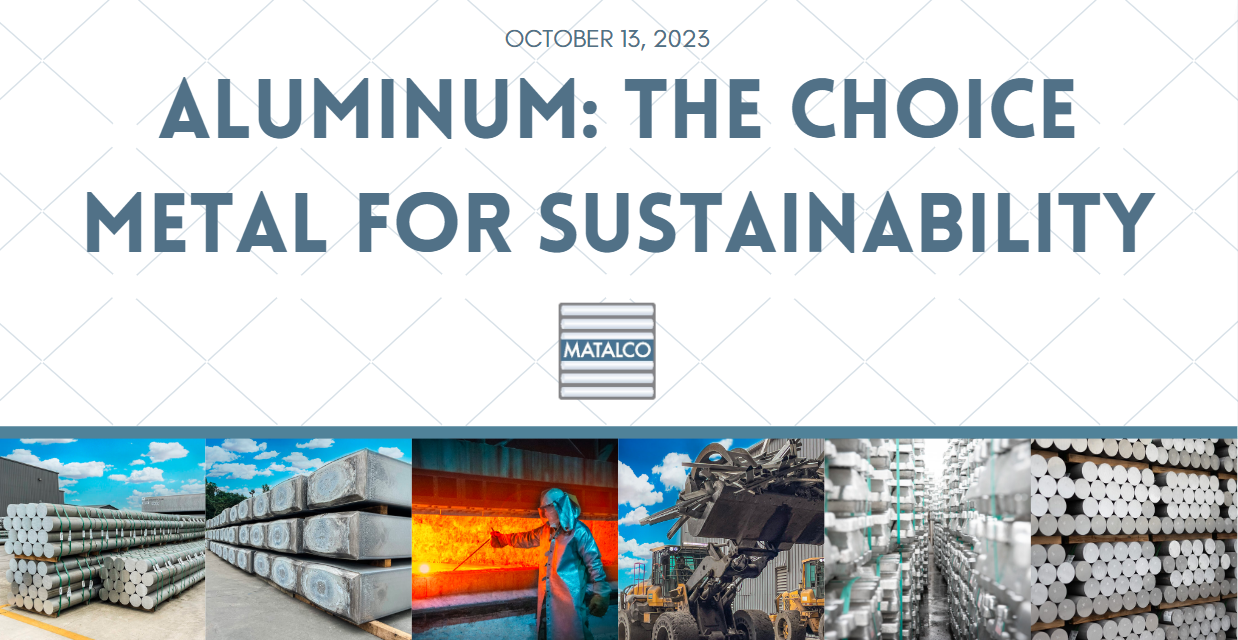The Giampaolo Group of Companies has maintained a longstanding reputation for delivering sustainable and environmentally responsible metal management solutions. Leveraging our expertise in the field of metal recycling, we find it important to introduce our preferred selection of environmentally sustainable metals, beginning with aluminum.
The Endurance of Aluminum
While it is true that nothing lasts forever, aluminum stands as a testament to enduring quality, boasting an exceptionally long lifecycle compared to other metals. In fact, the Aluminum Association states that approximately 75% of all aluminum ever produced remains actively in use today.
This remarkable attribute is credited to aluminum’s continuous recyclability, rendering it the most environmentally conscientious choice among metals. The utilization of recycled aluminum conserves an impressive 95% of the energy otherwise expended in the creation of new aluminum. With such a remarkable efficiency percentage, it is no surprise that companies have begun to lean towards utilizing recycled aluminum over newly produced materials.
An Abundance of Uses
Have you ever stopped for a moment and thought about just how much aluminum is around us? It forms the structural foundation of a diverse set of industries such as automotive, aerospace, architecture, packaging, and electrical engineering. Bolstered by its lightweight constitution and exceptional resilience, a recent study conducted by the International Aluminium Institute in 2022 forecasts a substantial 40% surge in global aluminum demand by 2030.
Aluminum’s central role in our daily lives is evidenced by its presence in staples, foils, cans, utensils, cookware, major home appliances, kitchenware, and the infrastructure of buildings and bridges. Additionally, it finds an essential place in the world of modern technology, including smartphones, televisions, airplanes, trains, and automobiles.
Looking at this list it’s safe to say that a world without aluminum is not a world we want to live in.
The Answer to a Reduced Carbon Footprint
The key avenue to reducing our carbon footprint lies in the exceptional recyclability of aluminum. As per the Aluminum Association, the use of recycled aluminum results in an impressive 95% reduction in the energy required for its renewal. Incorporating secondary aluminum into the supply chain empowers manufacturers to fulfill chemical specifications while simultaneously reducing the carbon footprint. With such a compelling efficiency metric, it is evident that the era of embracing the time-tested and eco-conscious properties of aluminum is well underway.
Economic Efficiency
Beyond its environmental advantages, aluminum recycling also contributes significantly to economic prosperity. The savings generated by utilizing recycled aluminum can be reinvested in research and development, job creation, and the growth of a sustainable, forward-thinking industry. This not only strengthens the economy but also nurtures a culture of resourcefulness, innovation, and long-term economic stability.
To Conclude
Evidenced by above, aluminum, with its remarkable durability and recyclability, stands as a symbol of environmental stewardship and resource efficiency. Its long lifespan, energy-saving potential, and pivotal role in a wide range of industries demonstrate its relevance in a rapidly evolving world. As we continue to embrace aluminum’s recyclable nature, we simultaneously stimulate economic growth and safeguard our planet’s precious resources. In a world faced with mounting ecological challenges, aluminum recycling serves as an example of how sustainable practices can forge a union between industry, economics, and environmental responsibility.

